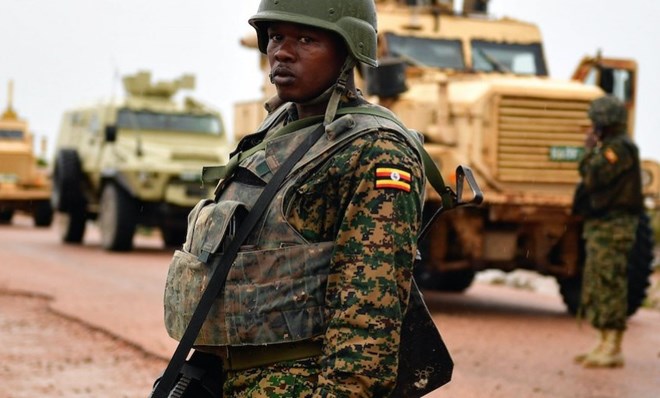ISS Africa
Tuesday March 29, 2022

The African Union Mission in Somalia (AMISOM) has supported
that country’s government in the fight against al-Shabaab for the past 15
years. The operation was due to end in December 2021, and agreement has finally
been reached on what appears to be simply a name change and extension of the
existing mandate.
The African Union (AU), United Nations (UN) and Somali
government decided that on 1 April, AMISOM will be replaced by the AU
Transition Mission in Somalia (ATMIS). The new mission will operate until the
end of 2024, after which all responsibilities will be handed to the Somali
Security Forces. ATMIS’ capacity of around 18 000 troops, 1 000 police and 70
civilians mirrors its predecessor, as does much of its mandate.
So has anything changed that can help stabilise Somalia?
AMISOM’s work started in March 2007, to degrade al-Shabaab
and build the capacity of the Somali Security Forces, military and police so
that the mission could eventually withdraw in 2021. The exit didn’t happen
though, as the security threats that necessitated the deployment in the first
place, continue.
To determine AMISOM’s future, the AU and UN conducted
independent assessments last year, and various options were proposed. Agreement
was needed on a new mission’s mandate, composition, size, strategic and
specific objectives and tasks of the military, civilian and police components.
The UN Security Council is expected to approve the mandate
and authorise ATMIS at its 30 March meeting
Somalia’s government wants ATMIS to focus on implementing
the Somalia Transition Plan. The plan was developed in 2018 to transfer
security responsibilities from AMISOM to the country’s security forces. It was
recently revised and will be carried out over the next three years. The AU and
UN agreed with this approach. Bankole Adeoye, AU Commissioner for Political
Affairs, Peace and Security, said ATMIS’ stabilisation and state-building
objectives would fully align with the Somalia Transition Plan.
The AU Peace and Security Council outlined a mandate for the
new mission that included degrading al-Shabaab and other terrorist groups,
providing security, developing the capacity of the security forces, justice and
local authorities, and supporting peace and reconciliation. The UN Security
Council is expected to approve the mandate and authorise ATMIS at its 30 March
meeting.
But AMISOM’s mandate was also aligned with the Somalia
Transition Plan, so there’s nothing new about ATMIS in that regard.
Omar S Mahmood, Senior Analyst at the International Crisis
Group, told ISS Today he believed ATMIS would have only a few slight
differences. ‘The biggest change is perhaps that the idea of a “transition” is
more thoroughly embedded within the rationale of the new mission, which has a
four-phased timeline to work with the Somali government to implement the
Somalia Transition Plan.
‘Also, a few smaller adjustments are supposed to happen as
well, such as re-alignment of AMISOM’s sector structure and increased
command-and-control authority under the mission’s force commander, but these
are limited overall.’
Prioritising the political stalemate would help solve the
country’s security challenges
In terms of operational changes, ATMIS will differ from
AMISOM by developing more mobile and agile forces in each sector of the
mission. The job of these quick-reaction forces with enabling capacities will
mainly be to rapidly degrade al-Shabaab and other extremist militant groups.
AMISOM’s replacement comes at a critical time. Political
tensions in the country still threaten the gains made over the years. Divisions
among Somalia’s elites over the distribution of power and resources are at the
centre of all the problems. Two peaceful power transitions occurred in 2012 and
2017, but the third faltered due to disputes over election management.
President Mohamed Abdullahi Mohamed, in power since 2017, is
still in charge after his term expired in February 2021. Prime Minister Mohamed
Hussein Roble was tasked with reforming the election process, but progress has
been slow. The country’s future is unpredictable, with the political impasse
sometimes boiling over into armed clashes.
Increasing attacks by al-Shabaab is another major challenge.
Many assaults were reported in the past few months, with recent strikes in
Mogadishu and Beledweyne resulting in over 53 deaths. Despite actions by AMISOM
and the Somali Security Forces, the group still controls large territories in
South and Central Somalia, and attacks are increasing.
It is likely that ATMIS will also face the same financial
woes as AMISOM
Al-Shabaab’s financial and warfare capacity is also growing.
The Hiraal Institute, a Mogadishu-based research group, reports that the group
collected about US$180 million in revenue and spent US$24 million on weapons in
2021.
ATMIS will also face the same financial woes as AMISOM. The
UN provided the mission’s logistical support, with the European Union (EU)
funding military and police personnel stipends. But the EU reduced its support
over recent years, and its intentions for ATMIS aren’t yet clear. Tiina
Intelmann, head of the EU delegation to Somalia, has said that ‘The EU is ready
to contribute and assure predictability of funding as long as the configuration
plan is realistic, pragmatic and focused.’
So it seems that ATMIS won’t differ fundamentally from
AMISOM in its mandate. It will mostly be a continuation of the current military
support which, while essential for the country’s security, won’t be new.
Since the political stalemate is at the centre of Somalia’s
social and security problems, solving that should be the priority. If it is to
differ from AMISOM, ATMIS’ mandate and force reconfiguration should include
robust political engagement to support reconciliation among the country’s
divided political groups. Otherwise, the exercise simply renames the mission –
which won’t help the country much.
Meressa K Dessu, Senior Researcher and Training Coordinator,
ISS Addis Ababa